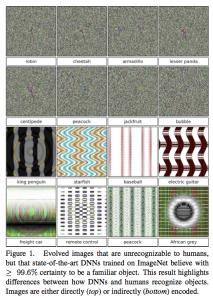Very like a whale
We see patterns everywhere, whether they are there or not. This gives us conspiracy theories, superstition, and homeopathy. It’s really hard to avoid drawing conclusions about patterns, even when you know they aren’t really there.
Some of the most dramatic examples are visual
HAMLET
Do you see yonder cloud that’s almost in shape of a camel?LORD POLONIUS
By the mass, and ’tis like a camel, indeed.HAMLET
Methinks it is like a weasel.LORD POLONIUS
It is backed like a weasel.HAMLET
Or like a whale?LORD POLONIUS
Very like a whale.
Hamlet was probably trolling, but he got away with it because seeing shapes in the clouds is a common experience.
Just as we’re primed to see causal relationships whether they are there or not, we are also primed to recognise shapes whether they are there or not. The compulsion is perhaps strongest for faces, as in this bitter melon (karela) from Reddit
and this badasss mop
It turns out that computers can be taught similar illusions, according to new research from the University of Wyoming. The researchers took software that had been trained to recognise certain images. They then started off with random video snow or other junk patterns and made repeated random changes, evolving images that the computer would recognise.
These are, in a sense, computer optical illusions. We can’t see them, but they are very convincing to a particular set of artificial neural networks.
There are two points to this. The first is that when you see a really obvious pattern it isn’t necessarily there. The second is that even if computers are trained to classify a particular set of examples accurately, they needn’t do very well on completely different sets of examples.
In this case the computer was looking for robins and pandas, but it might also have been trained to look for credit card fraud or terrorists.
Thomas Lumley (@tslumley) is Professor of Biostatistics at the University of Auckland. His research interests include semiparametric models, survey sampling, statistical computing, foundations of statistics, and whatever methodological problems his medical collaborators come up with. He also blogs at Biased and Inefficient See all posts by Thomas Lumley »


